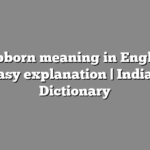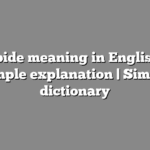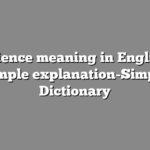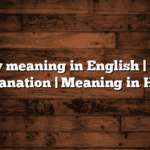The Remark “language is the dress of thought,” supposedly written by Samuel Johnson, an 18th-century writer, eloquently captures the complicated link between our inner workings of thoughts and the outer manifestation of language. Beyond merely serving as a medium of expression, it implies that the words we choose, the structures we construct, and the nuances we weave impact and are impacted by our thinking. When we delve into this link, we uncover an intriguing dance between language and the mind; it shapes our perceptions of the world and who we are. Let’s read below “Language is the Dress of Thought in English”.
Table of Contents
Weaving the Garment: How Language Reflects Thought
To put it simply, language is a window into our inner workings that we can open to those around us. Those around us can gain a comprehension of our more abstract thoughts, emotions, and experiences through the use of words. However, this outside depiction is more than just a reflection. Our internal comprehension is influenced by the words we use and the way sentences are constructed. Consider the difference between the adjectives “sad” and “melancholy.” While both “sad” and “melancholy” convey a sense of gloom, the former is more likely to make people feel emotional, while the latter lends an air of serious contemplation. A subtle shift in word choice can have an effect on our communication and how we interpret an event.
Grammar sheds much more light on the intricate nature of this thoughtful dialogue. The foundation for how ideas develop is laid by the often-revered rules of syntax and grammar. The way we string words together, build sentences, and set up logical pathways affects our perception and processing of information. To illustrate, consider the difference between declarative and interrogative statements, and how “The world is beautiful” and “Is the world beautiful?” are structured. The first one states an assertion as fact, while the second one invites exploration and discussion. By influencing our perspective on what constitutes beauty, this framework reflects our mental processes and influences our evaluations.
Tailoring the Fabric: How Thought Shapes Language
Language is a reflection of ideas, but it’s not a one-way street. The ideas and beliefs we bring into a conversation influence our language expressions. When faced with novel concepts or experiences, we often struggle to put into words what we’ve experienced. This shows how language falls short in conveying the complexities of thought. The limitations of our language might impair our ability to think in a nuanced way. Without the right words, it can be hard to put ourselves in another person’s shoes and experience their emotions or thoughts.
Cultural and social variables influence not only the language we use but also, consequently, the way we think. Culture shapes language rather than the other way around. Language is a system that everyone uses, and it is influenced by conventions and traditions. When we speak, we shape and strengthen our ideas inside frameworks of commonly held beliefs and understandings. A good illustration of this is the disparity between languages that have a large vocabulary for family relationships and those that have a smaller vocabulary for familial links. The former often encourages people to be more cognizant of the importance of family ties.
Read More:- Sought meaning in English | Simple explanation | Simple Dictionary
Beyond the Fashion Show: Implications of the Language-Thought Connection
The intricate relationship between language and cognition has enormous untapped potential in many fields. Belief in the power of language to influence thought processes guides pedagogical practices. Vocabulary and critical thinking skill development are emphasized from this angle. Psychologists can leverage this information to better understand how language impacts an individual’s sense of self and mental health. To interact more effectively with persons from other linguistic origins, it is vital to be aware that language influences thinking. This is a crucial step in cross-cultural communication.
Investigating this link does, however, raise some ethical questions. Is it feasible to influence someone’s thoughts by changing the way they speak, perhaps for malicious purposes? Do you know how to prevent language from being a control mechanism and how to make it a tool for empowerment instead? Exploring the complex relationship between language and cognition is essential for a deeper understanding of communication and for cultivating a critical lens through which to examine one’s own identity, one’s community, and one’s own ideas. I hope you like reading “Language is the Dress of Thought in English”.

Dr. Rajesh Sharma is a Hindi language expert with over 10 years of experience and a Ph.D. in Hindi Literature from Delhi University. He is dedicated to promoting the richness of Hindi through his well-researched articles on meaninginnhindi.com. Follow Dr. Sharma on Instagram @hindi_adhyapak, where he shares insights with his 121K followers.










